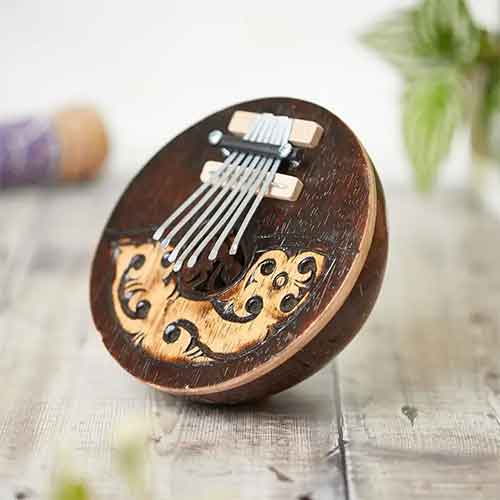The guitar is an instrument synonymous with passion, versatility, and expression. It has been the backbone of countless musical genres, accompanying artists on stage and in the studio. But what do you know about the guitar beyond the classic image of a singer-songwriter strumming at an open mic night? This guide will explore the histories, unique features, and genres defined by different types of guitars.
1. Acoustic Guitar
The acoustic guitar is the most recognized and widely played type globally. It is beloved for its rich, resonant sound that can fill a room without amplification. Acoustic guitars typically have six strings, though variations exist, and are made of wood, with many types of tonewoods influencing the instrument's sound. They are versatile instruments, capable of being integrated into many musical genres, from folk and country to pop and rock.

Rooted in ancient traditions, the acoustic guitar, as you know it today, evolved from early stringed instruments. Originating from the lute and changing through the Renaissance and Baroque periods, the modern acoustic guitar began taking shape in the 19th century. Innovations in body shape and bracing patterns helped project a louder and clearer sound that suited intimate settings and larger venues.
The acoustic guitar is often associated with singer-songwriters and is a staple in storytelling genres. Its ability to convey emotion with simplicity or complexity makes it a powerful tool for composers and lyricists. The acoustic guitar is used in genres like folk, where it accompanies tales of love and protest, and flamenco, where it is integral to passionate performances.
2. Banjo Guitar
The banjitar, a hybrid instrument combining elements of banjo and guitar, is also known as the banjo guitar or guitjo. Typically, it has six strings and is tuned like a guitar, making it an accessible crossover for guitarists looking to discover the bright, twangy sound of the banjo. The banjo guitar is often constructed with a drum-like body and a fretted neck, which give it a distinctive timbre and playing feel.

The banjo guitar emerged as a popular instrument in jazz, country, and folk music in the early 20th century. Its design was influenced by the banjo's African roots and the European guitar, creating a unique American cultural expression. The instrument gained popularity due to its ability to cut through the playing mix and rhythmic capabilities, making it a favorite among early recording artists and live performers.
You'll often hear the banjo guitar in genres celebrating the American spirit, such as bluegrass, country, and folk. Its twangy, bright sound is symbolic of rural landscapes and has become a staple in the portrayal of American roots music. The banjo guitar's distinct tone can add a touch of nostalgia or drive a song with its rhythmic bounce, making it a valuable asset for musicians.
3. Baritone Guitar
The baritone guitar is a lesser-known variant that occupies the space between standard and bass guitars. Typically tuned a fourth or a fifth lower than a standard six-string guitar, the baritone delivers deep, resonant tones that enrich the music's texture. Its longer scale allows for lower tunings while maintaining tension in the strings, leading to a clear, powerful sound.

The baritone guitar emerged in the mid-20th century in surf rock, Western swing, and heavy metal and rock music. It was developed to serve musicians seeking a lower range that could complement standard guitars in a band setting. Its use has expanded over time as artists have sought new tonal possibilities, making the baritone a modern tool for innovation in guitar music.
Due to its deep, brooding tone, the baritone guitar is well-suited for genres that require a dramatic landscape, such as metal, jazz, and experimental rock. It is often used to create a thick undercurrent in a song or to lead with a powerful, commanding voice. The baritone guitar is appreciated for its ability to push the boundaries of traditional guitar sounds, offering a fresh palette for composers and performers alike.
4. Bass Guitar
The bass guitar has four strings that provide the rhythmic and harmonic foundation in modern bands. It helps to connect the percussive elements with the melodic components of music. Although it looks similar to an electric guitar, the bass guitar has a longer neck and a larger body to handle the lower frequencies that it produces.

The electric bass guitar's history began in the 1930s, but it was in the 1950s that manufacturers like Fender popularized it. The transition from upright basses to the more portable and versatile bass guitars changed the music landscape, allowing for greater mobility and ease of use. The bass guitar quickly became an essential element in rock 'n' roll, funk, and jazz, providing the driving groove for which these genres are known.
You'll find the bass guitar in virtually every genre, from the pulsating lines in funk to the walking rhythms of jazz and the heavy rock and metal riffs. It is an instrument that can be subtly supportive or take center stage with a solo that commands attention. The bass guitar is universally celebrated for creating the groove that gets audiences moving and is the glue holding the harmony of songs together.
5. Classical Guitar
The classical guitar, commonly known as the Spanish guitar, features nylon strings that produce a softer, mellower tone compared to steel-stringed guitars. It typically has a wide neck to facilitate the complex fingerpicking techniques used in classical music. The classical guitar's design, with a more petite body and distinct shape, is optimised for the intricacies and nuances required by classical compositions.

The classical guitar has its roots in the courts of Renaissance Europe, where it was used to entertain nobility. It evolved from earlier stringed instruments like the vihuela and the Baroque guitar, with significant development occurring in Spain. Luthiers such as Antonio Torres popularized the modern classical guitar in the 19th century. Their design improvements enhanced the guitar's volume and tonal qualities, paving the way for its use as a solo concert instrument.
The classical guitar is often associated with the works of composers like Francisco Tárrega, Fernando Sor, and, more recently, Andrés Segovia, who brought the instrument to prominence in the 20th century. It is used primarily in classical music but has been taken in by other genres such as flamenco, Latin, and folk music. The classical guitar is revered for its technical demands and the expressive range it offers to virtuosic players, making it a favorite for formal recitals and intimate performances.
6. Double Neck Guitar
The double-neck guitar is an attention-grabbing instrument with two fretboards and strings. It usually combines six-string and twelve-string guitars or a six-string guitar and a bass guitar. This design allows the player to switch between different sounds and tunings mid-performance, expanding the musical possibilities. Double-neck guitars are known for their visual impact as much as their versatility.

The double-neck guitar gained prominence in the 1960s and 1970s, marked by experimentation and boundary-pushing in music. It was popularized by rock guitarists who sought new ways to express their creativity on stage. The instrument's dual nature allowed for the performance of complex pieces that would otherwise require multiple guitars or additional musicians, making it a symbol of technical prowess and showmanship.
You will often see the double-neck guitar in the hands of rock and progressive musicians who use the instrument to perform elaborate compositions. It is well-suited for genres that value theatricality and technical skill, such as progressive rock, hard rock, and metal. The double-neck guitar is not just a stage prop; it is a practical solution for artists who seek to push the limits of live performance.
7. Electric Guitar
The electric guitar, known for its solid body and magnetic pickups that convert string vibrations into electrical signals, is the quintessential rock 'n' roll instrument. Electric guitars commonly have six strings, but seven, eight, and even nine-string variants are used in genres that demand a broader range of notes. The electric guitar is a canvas for experimentation, with effects and amplification shaping its voice.

The electric guitar, invented in the 1930s, revolutionized music and created new styles and subcultures. It became a cultural icon in the hands of pioneers like Chuck Berry, Jimi Hendrix, and Eric Clapton, who exploited its potential to create powerful, dynamic solos and riffs. The electric guitar's adaptability and expressiveness allowed it to dominate the music scene throughout the 20th century, becoming synonymous with rebellion, youth, and innovation.
The electric guitar is indispensable in rock, blues, metal, and pop. Its ability to produce various sounds makes it a versatile instrument that can scream with distortion, cry with the blues, or shimmer with clean, chorused tones. The electric guitar continues to be a tool for trailblazers, a weapon of choice for those looking to leave their mark on the landscape of modern music.
8. Jazz Guitar
The jazz guitar is an electric or archtop guitar often associated with a clean, warm sound suitable for the intricate harmonies and improvisational work in jazz music. Jazz guitars usually have six strings and are equipped with hollow bodies that enhance their acoustic properties, even when amplified. The design of the jazz guitar, with its elegant curves and often ornate detailing, reflects the sophistication of the genre it serves.

Jazz guitars emerged in the early 20th century as bands sought instruments that could be heard alongside brass and woodwinds without being overwhelmed. The development of the archtop guitar, with its more robust projection and fuller tone, met this need and became a mainstay in jazz groups. The evolution of jazz guitar playing can be traced through the work of legends like Django Reinhardt, Wes Montgomery, and Joe Pass, who each contributed to the instrument's rich legacy.
The jazz guitar is famous in various styles, such as swing, bebop, fusion, and smooth jazz. Its clean tone is perfect for articulating complex chords and weaving through jazz improvisation's spontaneous nature. Jazz guitarists are known for their technical ability and musicality, often using the instrument to explore the depths of harmony and rhythm. The jazz guitar remains a canvas for creativity, allowing players to express nuanced emotions and push the boundaries of traditional guitar playing.
9. Twelve-String Guitar

The twelve-string guitar is a variation of the standard six-string guitar. Each of its regular strings is paired with a thinner string, usually tuned to an octave higher. This setup creates a rich, chorus-like effect that adds depth and resonance to the guitar's sound. The twelve-string guitar is visually similar to its six-string counterpart but requires a sturdier construction to handle the increased tension from the additional strings.
The twelve-string guitar's use in modern music can be traced back to folk and blues traditions, where its fuller sound was favored by traveling musicians and songsters. The instrument gained widespread popularity in the 1960s folk revival, with artists like Pete Seeger and Lead Belly showcasing its potential. The jangling sound of the twelve-string guitar is popular in rock music, with bands like The Byrds and Led Zeppelin incorporating it into their sounds.
The twelve-string guitar is well-known for its use in folk, rock, and pop music, where it adds a shimmering layer of harmonic richness. It is an instrument that can fill out the acoustic space in a solo performance or add a lush backdrop in a band setting. The twelve-string guitar's distinctive jangle is instantly recognizable and is a favorite for musicians seeking a fuller, more textured sound.
10. Ukulele
The ukulele, a four-stringed member of the guitar family, is often associated with Hawaiian culture and is affectionately referred to as the uke. Its size and nylon strings make it a light, portable instrument that produces a bright, cheerful sound. The ukulele's simplicity and ease of play have made it a popular choice for beginners and experienced musicians looking to add a playful element to their music.

The ukulele's story began in the 19th century when Portuguese immigrants brought similar small stringed instruments to Hawaii. Its name, which roughly translates to "jumping flea" in Hawaiian, reflects the lively and elegant finger movements used when playing. The ukulele quickly became an integral part of Hawaiian music and culture, eventually spreading to the mainland and beyond as a beloved instrument of musical expression.
Despite its size, the ukulele has significantly impacted various music genres, from traditional Hawaiian songs to contemporary pop hits. The ukulele has the ability to adapt to different styles, providing a twist to classic tunes or serving as the primary instrument in ukulele-centric compositions.












